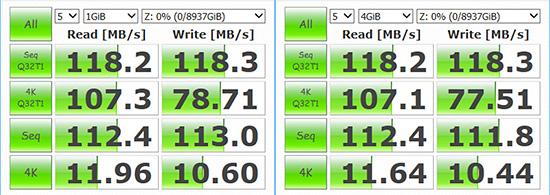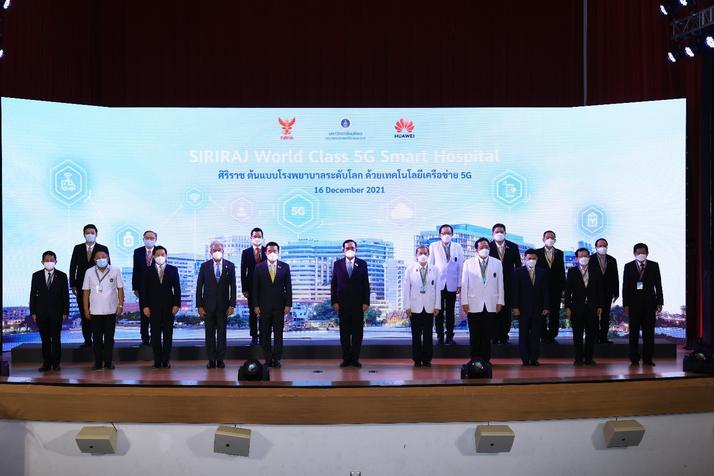Gimon of 10TB HDD, actually try and answer! Can it be used on NAS? Is the power consumption different from 1TB HDD?
- 1071
- 98
Gimon of 10TB HDD, actually try and answer! Can it be used on NAS? Is the power consumption different from 1TB HDD?
- By huawei-accessories.com
- 27/04/2022
IronWolf (ST10000VN0004) used for verification. The rotation speed is 7,200 rpm, the interface is 6 Gbps SATA, the cache size is 256 MB, and the maximum continuous data transfer speed is 210 MB / s. For NAS, the specifications are conscious of high-speed performance, but the mean time between failures (MTBF) is set to 1 million hours, making it a product with excellent durability. The actual selling price at the time of writing the article is around 53,000 to 55,000 yen including tax. This is the back side.It is a housing that seems to be robust, probably because it does not let the filled helium gas escape.
First, let's introduce the verification results on NAS.
In this verification, we prepared two 10TB IronWolf and tried to operate them with three NAS products "QNAP TS-231 +", "Synology DS916 +", and "ASUSTOR AS3102T" respectively.
In both cases, the drive configuration is RAID1 (mirroring). The client PC was Windows 10 Home (64-bit version), and "CrystalDiskMark 5.1.2 x64" was used to measure the read / write speed.
For convenience of verification, the grade of NAS used for verification differs among the three companies. Therefore, please note that it is not suitable for the purpose of "comparing speed etc. between NAS makers", but it is only data showing "usability when used with that model".
~ Standard after all ~
The "TS-231 +" is a 2-bay model located in the middle class for QNAP's home and SOHO NAS products. It is equipped with a dual-core CPU Cortex-A15 1.4GHz and 1GB of DDR3 RAM.
QNAP TS-231 + USB 3.0 port x 3 and Gigabit Ethernet 2 port equipped Tray by screwing the HDD into the trayIt is highly expandable, with three USB 3.0 ports that allow you to connect an external HDD to increase storage capacity, or connect a USB printer for sharing, and two gigabit-compatible LAN ports. .. In terms of software, it supports DTCP-IP compliant DLNA and is one that excels in multimedia functions. The corresponding RAID type is RAID 0 / RAID 1. The actual selling price at the time of writing the article is around 25,000 yen including tax.
You can check the list of HDDs supported by QNAP products here. Please refer to it when using another NAS kit or another HDD.
The management screen of the TS-231 +. Because of RAID1, the HDD capacity is 8.85TB, and the used capacity immediately after setup is displayed as 194MB. This is the management screen of ASUSTOR AS3102T, but in the RAID configuration, synchronization processing is required at the time of initialization. With a large capacity of 10TB, it takes a considerable amount of time.The setup procedure for the TS-231 + is roughly as follows.
1. Set up according to the instructions in the installation guide on the Web 2. Screw the HDD to the tray and insert it into the main unit 3. Connect the cables and turn on the power 4. LAN with the NAS search tool "Qfinder Pro" Find the TS-231 + above 5. Access the initial settings screen from Qfinder Pro 6. Install the firmware (OS) 7. Set the administrator information, drive configuration, etc. 8. Restart and start using
It takes about 30 minutes from turning on the power of the TS-231 + until it can be used as a NAS (until the above 2 to 8 are completed). After that, the original optimization process takes about 30 minutes, followed by the initial synchronization process of RAID1. It took about 15 and a half hours to complete the synchronization, and it took a total of 16 and a half hours to reach the maximum performance.
With a large capacity of 10TB, regardless of the NAS model, this initial synchronization process alone takes almost a full day. However, the functions of the NAS are rarely restricted during the optimization process and the synchronization process, and only a slight performance degradation may occur.
The read / write performance during this synchronization process and the same performance after the synchronization is completed are as follows. The TS-231 + may have some priority in synchronization processing, and the difference in performance between during synchronization processing and after completion is a little large. Random read / write performance does not seem to be very good.
[Read / write performance during TS-231 + synchronization processing] TS-231 + Read / write performance during synchronization processing, verification data size 1GiB on the left, 4GiB on the right [TS-231 + Read / write performance after synchronization is completed] TS-231 + Synchronization Read / write performance after completion, verification data size 1GiB on the left, 4GiB on the right-Exhibits high speed like a commercial model-
In recent years, NAS from Taiwanese manufacturer Synology has entered the Japanese market and is beginning to gain popularity. The DS916 + is a 4-bay model optimized for data management in SMEs in its lineup.
Storage can be expanded with Synology DS916 + eSATA port, and the two LAN ports can fix the HDD to the tray just by inserting plastic parts that support link aggregation.The CPU is a quad-core 64-bit Intel Pentium N3710 1.6GHz, and the memory is equipped with 2GB (up to 8GB) DDR3. The corresponding RAID type is JBOD / RAID 0/1/5/6/10.
USB 3.0 x 3 with an eSATA port, and two gigabit LAN ports that support teaming (link aggregation) can be used, which is exactly the one that matches the business use that multiple users access at the same time. The actual selling price is about 70,000 to 80,000 yen.
You can check the list of HDDs supported by Synology products here.
DS916 + management screen. It was displayed that the HDD capacity was 8.73TB and the used capacity immediately after setup was about 65MB.
The setup procedure for DS916 + is as follows.
1. Fix the HDD to the tray with plastic parts 2. Connect the cables and turn on the power 3. Access the NAS setup site on the Web and go to the initial setting screen 4. Install the firmware (OS) 5. Set administrator information, drive configuration, etc. 6. Restart and start using
It takes about 22 minutes from turning on the power of DS916 + until it can be used as NAS (until the above 3 to 6 are completed). After that, the initial synchronization process of RAID1 starts. It took about 17 hours to complete the synchronization, and it took about 17 hours in total to reach the maximum performance.
The most distinctive feature of the DS916 + is that it does not use any screws or screwdrivers to set the HDD. The front cover that hides the drive bay is rubber-mounted and can be removed by simply pulling. In addition, the HDD can be firmly fixed by simply attaching and detaching the plastic parts on both sides of the HDD tray.
In read / write processing, it demonstrates high-speed and stable performance that is clearly different from that for home use for business use. Even if the data size is different, there is almost no blurring.
[DS916 + Read / write performance during synchronization] DS916 + Read / write performance during synchronization, left is verification data size 1GiB, right is 4GiB [DS916 + Read / write performance after synchronization] DS916 + Read / write performance after synchronization, left is verification data size 1GiB , Right is 4GiB-Is it less susceptible to background processing? ~
ASUSTOR, which develops NAS under the umbrella of ASUS, has released the "AS3102T" as a high-performance NAS for home use.
ASUSTOR AS3102T HDMI output is prepared, and it is a type that opens the main body cover and attaches the HDD, which is unusual for a NAS for home that can be directly connected to a large screen TV etc.The CPU is a dual-core Intel Celeron 1.6GHz, the memory is 2GB DDR3L, one gigabit LAN port, and three USB 3.0 ports. The corresponding RAID type is JBOD / RAID 0 / RAID 1. The actual selling price is around 30,000 yen, and it can be said that it is a product that directly competes with the QNAP TS-231 +.
The point is that a display output compatible with HDMI 1.4b is prepared, it has a hardware acceleration function compatible with H.264 / H.265 / MPEG-2, etc., and it can be directly connected to a TV etc. to play videos in the storage. It can also be used to easily project videos archived at home, or to play promotional image videos at stores and events.
You can check the list of HDDs supported by ASUSTOR products here.
Management screen of AS3102T. The HDD capacity was displayed as 9.02TB, and the used capacity immediately after setup was displayed as 80MB.The setup procedure for AS3102T is as follows.
1. Open the main unit cover and screw in the HDD 2. Connect the cables and turn on the power 3. Find the AS3102T on the LAN with the NAS search tool "ASUSTOR Control Center" 4. Initial setting from ASUSTOR Control Center Access the screen 5. Set administrator information, drive configuration, etc. 6. Update to the latest firmware (OS) 7. Restart and start using
It takes about 17 minutes from turning on the power of AS3102T until it can be used as NAS (until the above 3 to 7 are completed). After that, the initial synchronization process of RAID1 is performed. It took about 15 hours to complete the synchronization, and it took about 15 hours in total to reach the maximum performance.
It is a style that seems to take a little time and effort, which is rare for recent NAS, to open the main body cover that is screwed and install the HDD, but since the screw can be turned by hand, no screwdriver is required, and the processing required at the time of initial setting is also necessary. The feature is that it takes a short time to start using because it is small.
As for read / write performance, random read at 1GiB is especially fast as shown below. I don't know if this is due to the cache, but it's also interesting that there isn't a big difference in performance between syncing and not syncing.
[AS3102T Read / write performance during synchronization] AS3102T Read / write performance during synchronization, left is verification data size 1GiB, right is 4GiB [AS3102T Read / write performance after synchronization] AS3102T Read / write performance after synchronization, left is verification data size 1GiB , Right is ST31000528AS (1TB) used for comparison of 4GiBIron Wolf (10TB), a product released 7 years ago.Next, I checked IronWolf's noise, degree of heat generation, and power consumption.
For comparison, we prepared a 3.5-inch SATA HDD "Seagate Barracuda ST31000528AS (1TB)" for desktop PCs 7 years ago, and replaced it with IronWolf to mount one on each QNAP TS-213 + and operate it. Both have a rotation speed of 7,200 rpm, and although there are differences between old and new, we chose products that are similar in terms of conditions.
The check method is roughly divided into two patterns. The maximum volume level, power consumption (W), and HDD temperature are measured in each scene during startup (after) and copying a 2GB file (after).
Specifically, install one HDD in the TS-213 + indoors (environmental sound 36 dBA or less, room temperature around 27 degrees) 30 minutes or more after the power is turned off, and after turning on the power until it is completely started up. Measure the maximum value of HDD access sound and motor rotation sound (and vibration sound of peripheral equipment etc.) for 6 minutes with a sound level meter, check the power consumption with a power tap with watt checker function, on the management screen of TS-213 + I checked the HDD temperature after the boot was completed.
State when measuring volume level Power consumption is measured with a power strip with a watt checkerNext, the noise, power consumption, and HDD temperature after copying was recorded while copying the 2GB file from the PC to the TS-213 +. Immediately after the power is turned on, a loud fan sound and a beep sound are heard due to the hardware specifications, so these are excluded from the measurement targets. In addition, since the power consumption increases temporarily immediately after the power is turned on, this is also not included in the measurement results.
| model | During startup | Data is being copied |
|---|---|---|
| IronWolf (10TB) | 48.8dBA | 48.5dBA |
| Barracuda (1TB) | 46.4dBA | 43.4dBA |
| model | During startup | Data is being copied | When idle |
|---|---|---|---|
| IronWolf (10TB) | 11-15W | 13-14W | 12-13W |
| Barracuda (1TB) | 12-15W | 13-14W | 12-13W |
| model | Immediately after startup | Immediately after the data copy is completed |
|---|---|---|
| IronWolf (10TB) | 34 degrees | 35 ° |
| Barracuda (1TB) | 28 degrees | 32 degrees |
As far as this result is seen, the 10TB IronWolf is slightly higher in noise and temperature than the old 1TB model. However, this time IronWolf has 7 platters and Barracuda has 2 platters, which is a convincing result considering the physical difference (IronWolf's low capacity product has a lower nominal operating sound). On the other hand, the power consumption is suppressed to the "almost flat" level despite the increase in platters, and it can be said that it is a product that claims to be "for NAS".





![[VLOG interlocking report] Try the combination of Manfrotto's Nitro Tech 608 and iFootage's TC6 [VLOG interlocking report] Try the combination of Manfrotto's Nitro Tech 608 and iFootage's TC6](https://website-google-hk.oss-cn-hongkong.aliyuncs.com/drawing/article_results_9/2022/3/25/278166fcc7181b73dd99af1b87fd6482_0.jpeg)









